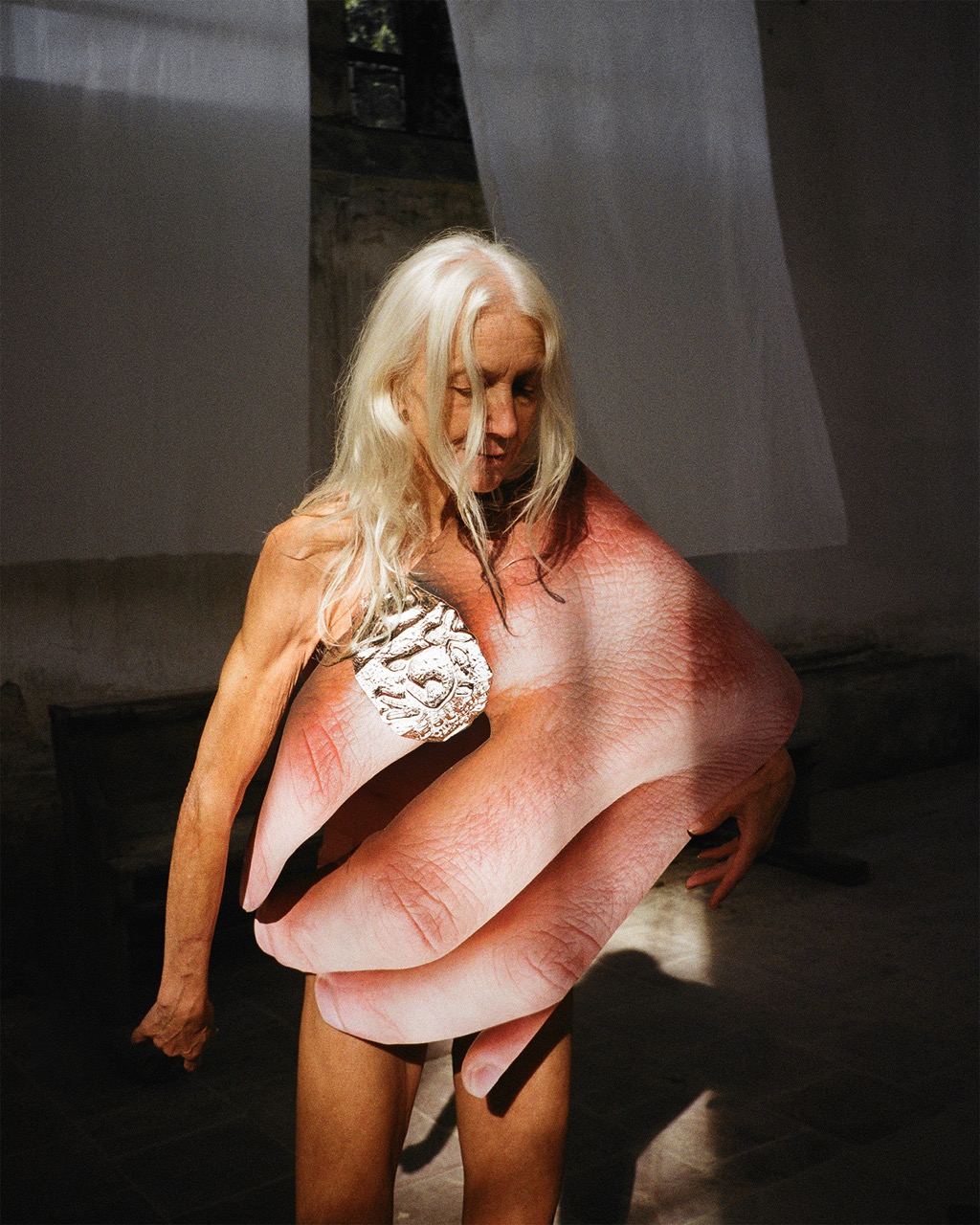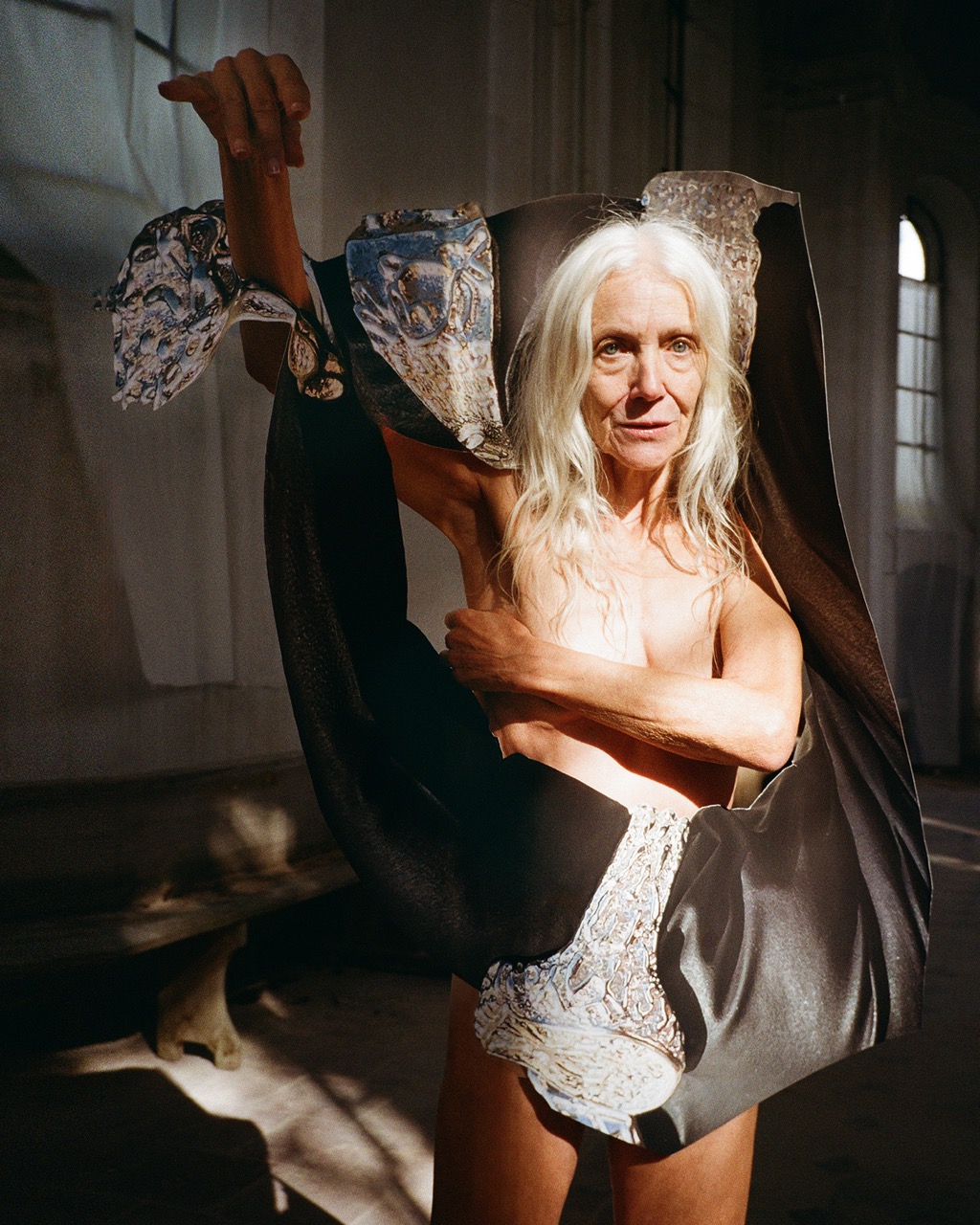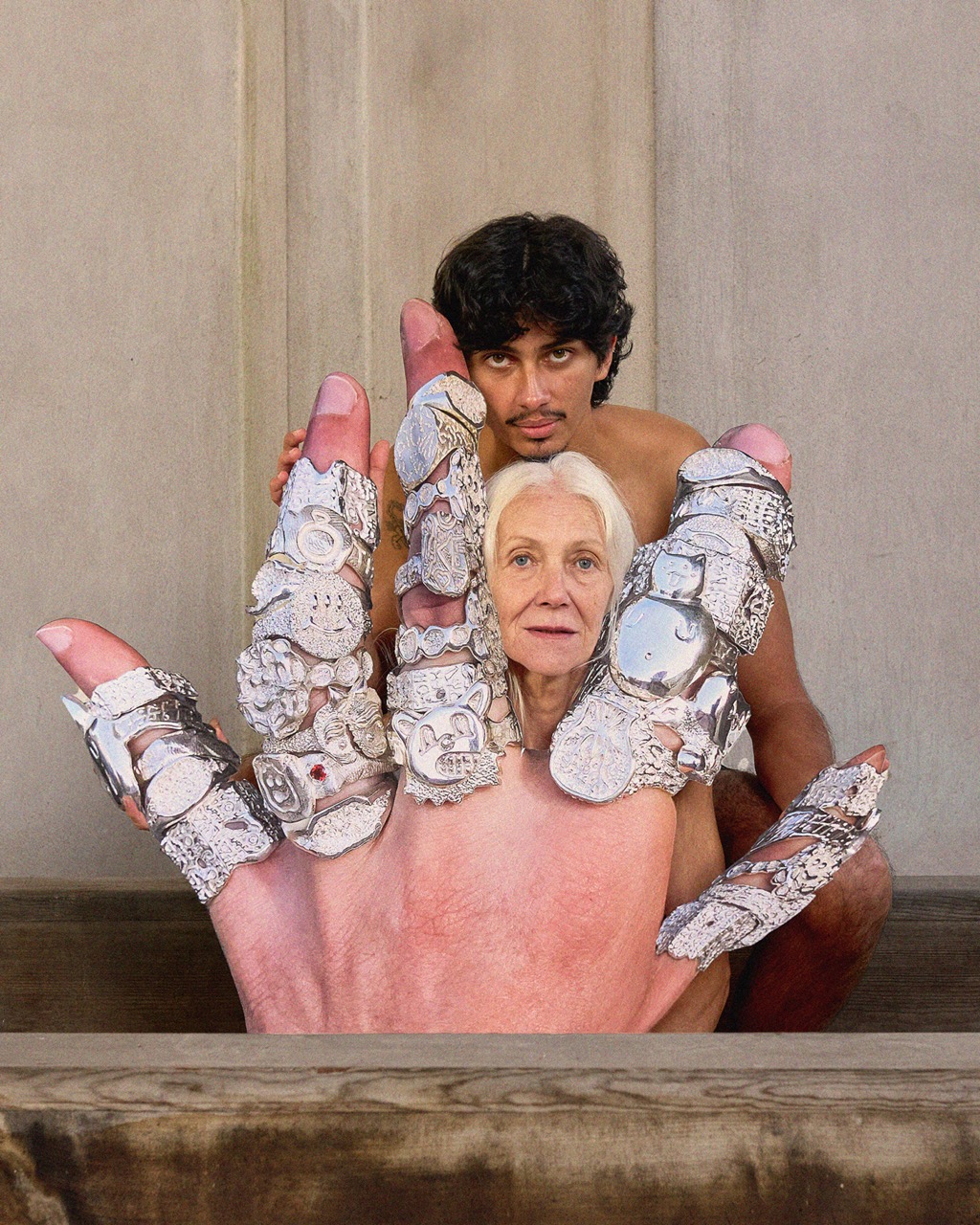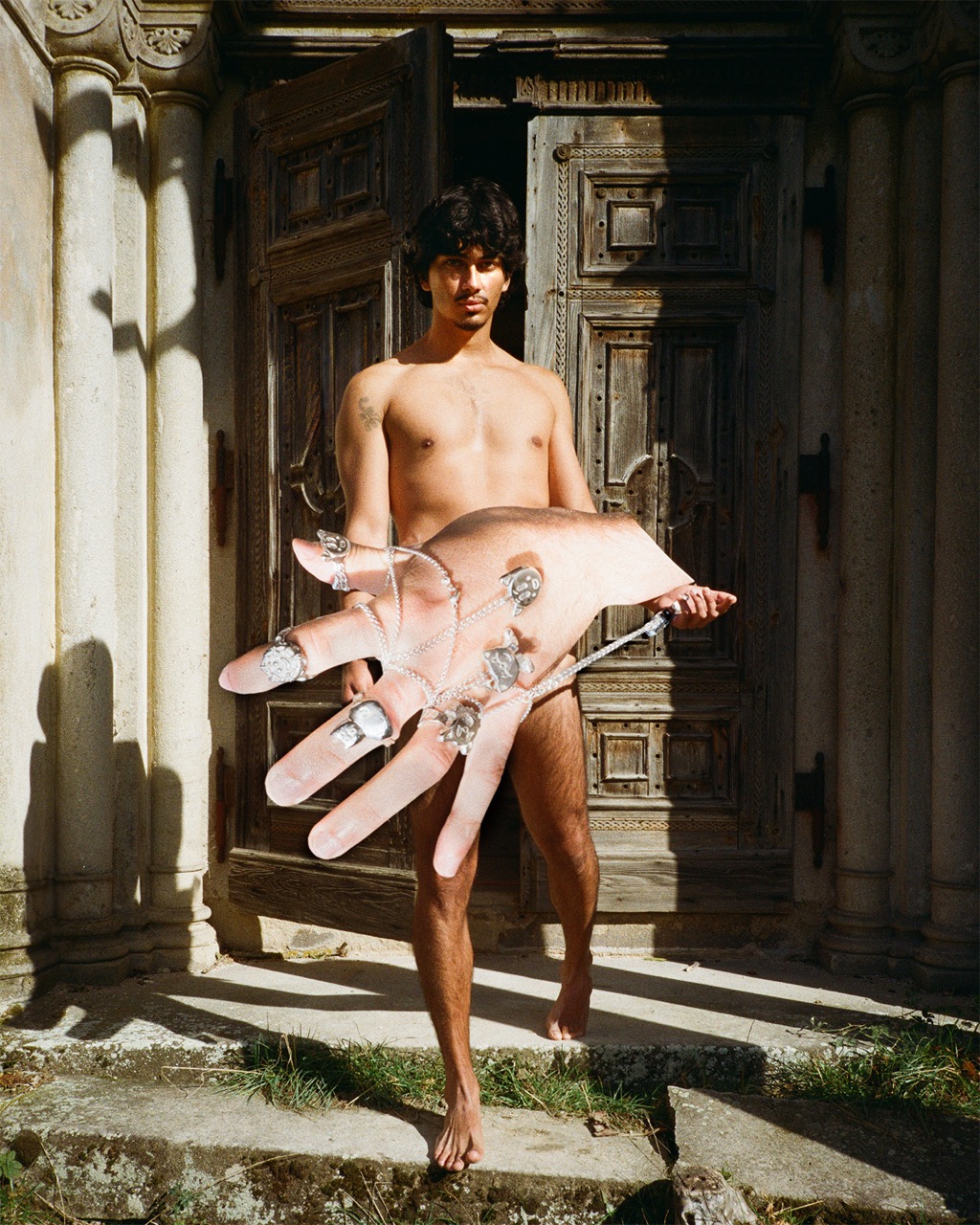3
Photographer of the Year
Klára Kudláček




In her photographs of jewelry by Ondřej Stára as well as her multi-channel video Affirmation: I Am Not Wrong, Wrong Is Not My Name (2024), Klára Kudláček develops the same theme – yet the aesthetic effect of both works is quite different. While in the video, the artist “dressed” the model in a printed and digitally retouched photograph of her own naked body in order to help her identify with it, on the product photographs, she covered up the two naked models with a blown-up photo of the jeweler’s own hand, bringing into focus the difference between these two media of communication. As opposed to the video, where she worked with life-size prints so that the audience could distinguish the real body from the photographed one, the product images prefer using different scales, so there is no chance of such ambiguity. In one photo, Stára’s hand laden with his rings seems to be grabbing hold of the model, while in another image, the model is holding the hand like a shield before him. The female model seems to be almost gripped by the hand adorned with the Casablanka králík (Casablanca rabbit) ring, while in the other, she is leaning on the hand showing the Casablanka Smile Emoji ring. All images contain nudity and are set in the devastated Olešná church in the Tachov region. But what really brings home the dreamy atmosphere is the hand severed from the rest of the body, even more so than the shifting scales, nudity and the decrepit surroundings. In this way, the severed aesthetics of Klára Kudláček’s photographs are reminiscent of Boiffard’s images of toes for Georges Bataille’s essay in the Documents (1929) surrealist revue. Both show the surreal nature of reality itself.
Karel Císař
Pavlína Blahotová
Karel Císař
Tereza Finková
Martina Freitagová
Emma Hanzlíková
František Kast
Iva Knobloch
Ján Kralovič
Michal Lalinský
Jiří Macek
Petra Roubalová
Eliška Vrbová
Milena Zuravljova